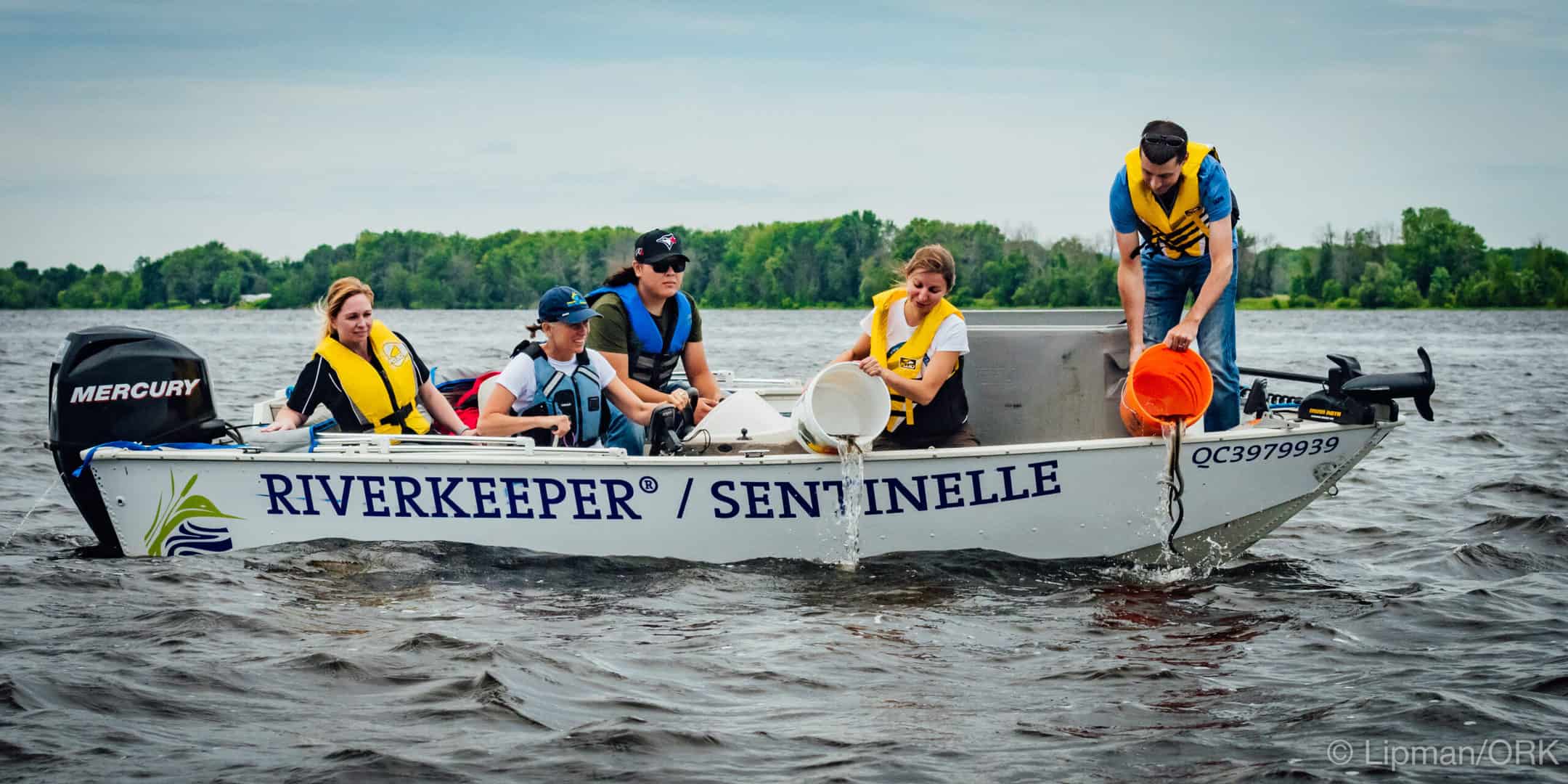Posted: July 13, 2017
Ottawa Riverkeeper releases 400 American Eels into the Ottawa River as part of broader efforts to recover the species

Ottawa Riverkeeper released 400 eels into the Ottawa River on July 12. Here's why!
Ottawa Riverkeeper (Sentinelle de la rivière des Outaouais) released 400 American eels on the shores of Petrie Island on July 12, 2017.
The eel release was part of a collaboration with the Canadian Wildlife Federation, with the ultimate goal of improving the passage of eels at the first two hydroelectric dams on the Ottawa River – Carillon and Chaudière. Eel passages at these two strategic locations would reopen 200 km of their historic range.
Once abundant in the Ottawa River, the American eel is now endangered.
“Over 98% of the Ottawa River population has now collapsed,” says Patrick Nadeau, Executive Director for Ottawa Riverkeeper. “We can’t stand by idly while the last eels – a very important species, particularly for First Nations – disappear from our watershed.”
This is largely due to dams along the Ottawa River.
An eel’s migration is fraught with obstacles. Spawning in the Sargasso Sea, they swim up the Atlantic coast, entering the St. Lawrence to reach the Ottawa River – their new home for up to 25 years. Unfortunately, of the 19 major dams on the Ottawa River, only one dam operator is currently making modifications to improve eel passage, meaning many eels are killed during migration.
As they travel up the Ottawa River, most eels cannot pass through the dams on their own, effectively stopping their migration. The few who do make it are often killed by dam turbines on the return trip.
Hydro-Ottawa has installed an eel ladder and turbine by-passes at the Chaudière dam this past year. As they begin operation, we hope to see an increased number of eels making their way up the river, as well as back towards the Atlantic Ocean.
Find out more by watching the video below!

About 25 years ago, I was fixing a dinghy on the Ottawa River a mile or two upstream from Kanata and watching a family playing on a beach of jumbled granite rocks. Kids in uncountable numbers like a school of fish, Mom managing a domestic haven in the shade of a boulder, Dad like a black-haired Father Christmas in beach attire watching the river flow as if counting ripples.
“It is time,” Dad announced.
The kids leapt up from their games and lined up beside Dad at the river’s edge. Mom stood and peered over the top of her boulder. This was important, so I watched too.
Dad picked up a rope lying at his feet and began hauling it in. Something bumped up out of the water and onto the beech. Something black and writhing with dozens of shiny tentacles flashing in the sun.
A little fascinated and a lot horrified, I clambered out of the dinghy. “What is it?”
“Eels,” said the eldest kid. Father was tugging at their tails, detaching them from a hunk of rotting meat and popping them into a bag.
“What are they for?”
“Pie.”